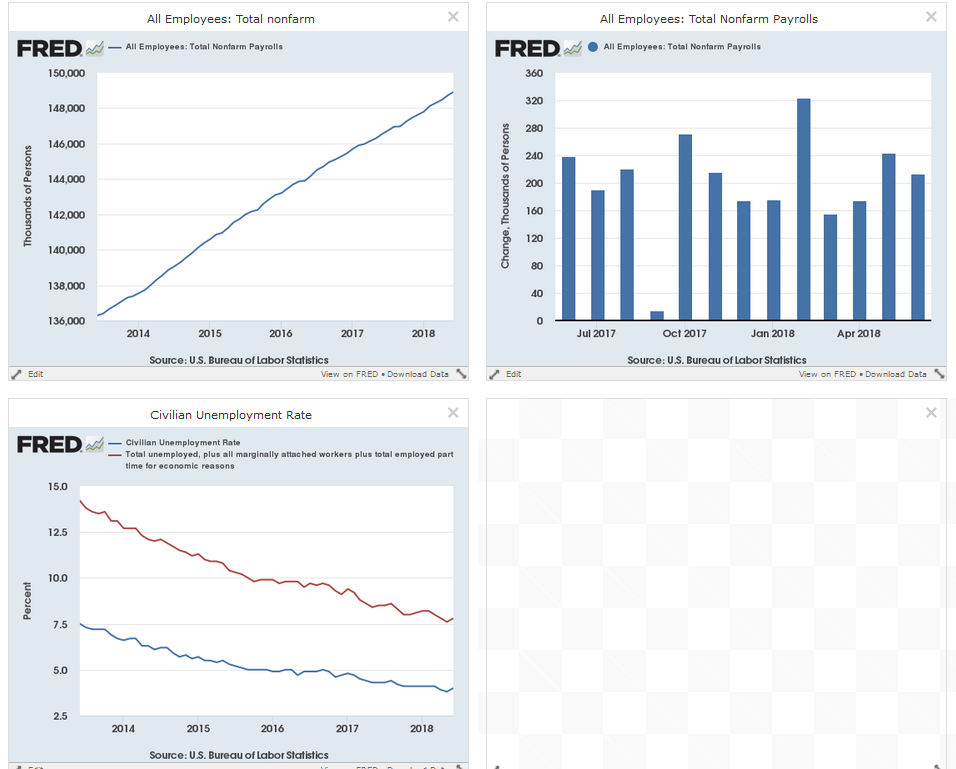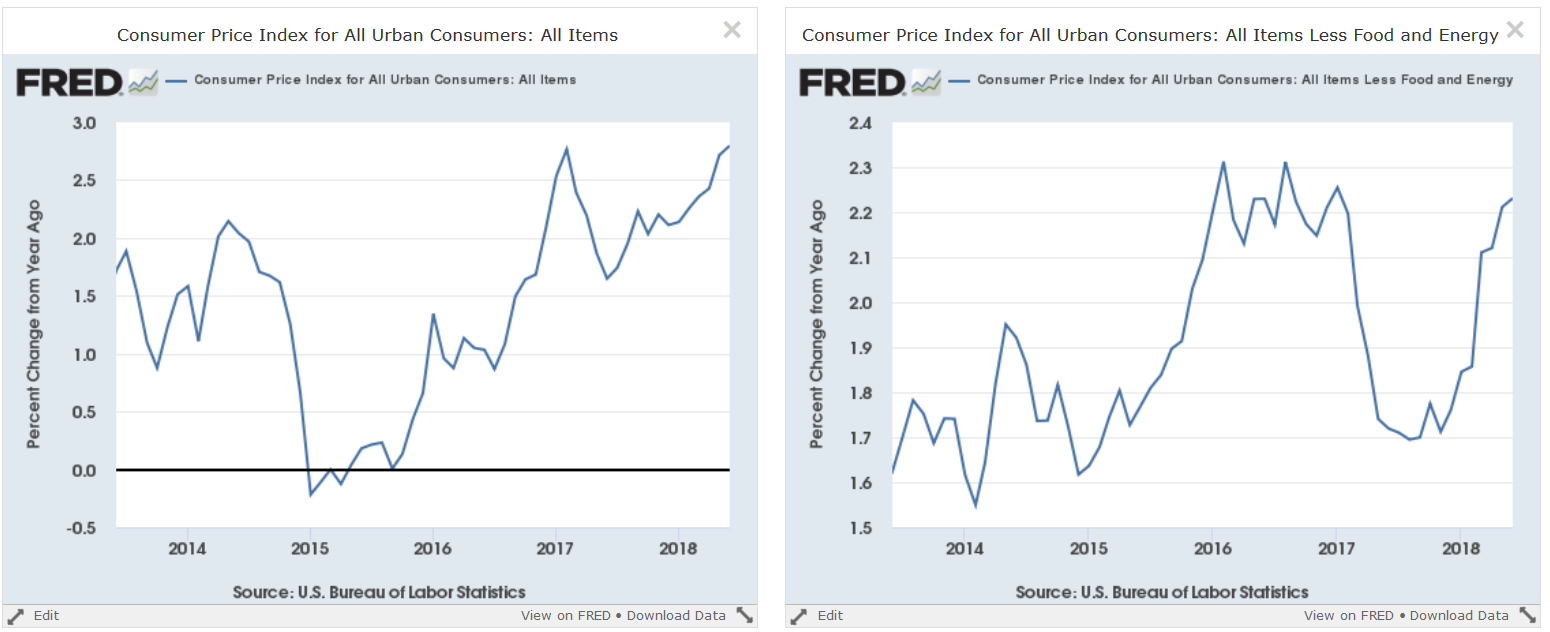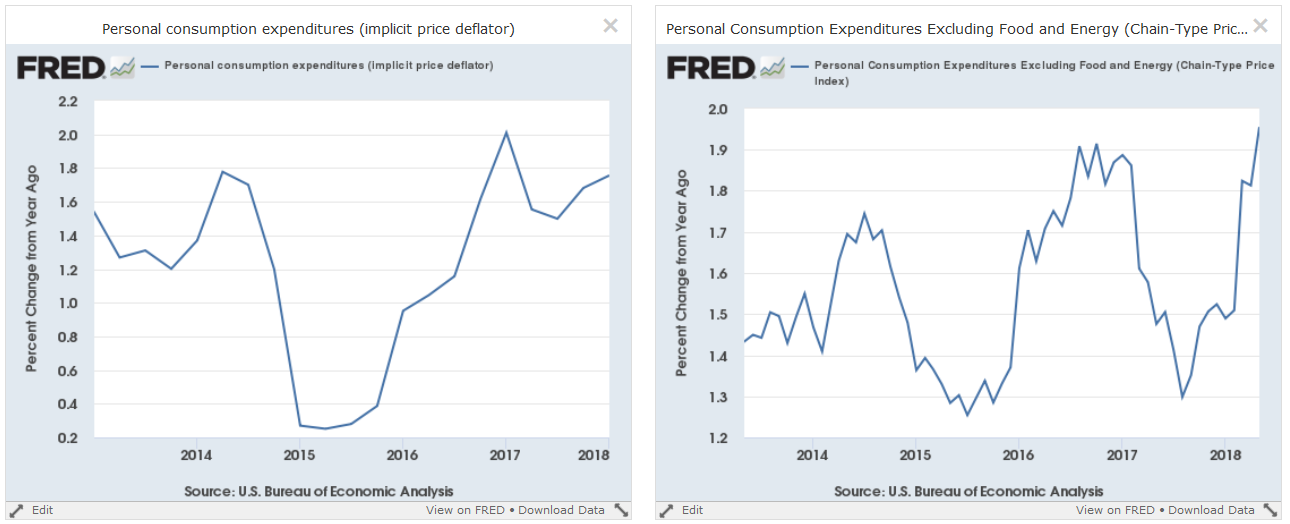Summary
Powell gave the semi-annual testimony to Congress.
Employment is strong, and prices are near the Fed's 2% target.
The Fed will probably continue to raise rates modestly.
This week, Chairman Powell gave his semi-annual Humphrey-Hawkins testimony to Congress, offering a positive assessment of employment and prices. He also reiterated his view that the Fed will continue to gradually raise rates.
Let's start with his discussion of the labor market:
An average of 215,000 net new jobs were created each month in the first half of this year. That number is somewhat higher than the monthly average for 2017. It is also a good deal higher than the average number of people who enter the work force each month on net. The unemployment rate edged down 0.1 percentage point over the first half of the year to 4.0 percent in June, near the lowest level of the past two decades. In addition, the share of the population that either has a job or has looked for one in the past month - the labor force participation rate - has not changed much since late 2013. This development is another sign of labor market strength. Part of what has kept the participation rate stable is that more working-age people have started looking for a job, which has helped make up for the large number of baby boomers who are retiring and leaving the labor force.
Let's look at this from several perspectives:

The chart in the upper left shows the total establishment jobs figure, while the chart on the right shows the monthly gain for the last 12 months. The left chart is perfect, rising consistently from the southwest to the northeast section of the chart. Eyeballing the right chart, we get a monthly establishment jobs gain of about 200,000. And the lower left-hand chart shows the U3 (in blue) and U6 (in red) unemployment rate. Both continue to move lower. All three charts are very strong.

The employment/population ratio (top charts) is increasing solidly, meaning a larger percentage of people are working. The labor participation rate (bottom chart) has moved sideways for the last five years, probably because labor-market outflows (read: retiring baby boomers) equal inflows.
The combined reading of the above data is that the labor market is in great shape.
Next, let's look at Powell's statement on inflation, keeping in mind that the Fed's 2% target is symmetrical - prices can be below or above the 2% level. The main thing the Fed is worried about is if prices remain above or below for an extended period of time:
I will turn now to inflation. After several years in which inflation ran below our 2 percent objective, the recent data are encouraging. The price index for personal consumption expenditures, which is an overall measure of prices paid by consumers, increased 2.3 percent over the 12 months ending in May. That number is up from 1.5 percent a year ago. Overall inflation increased partly because of higher oil prices, which caused a sharp rise in gasoline and other energy prices paid by consumers. Because energy prices move up and down a great deal, we also look at core inflation. Core inflation excludes energy and food prices and generally is a better indicator of future overall inflation. Core inflation was 2.0 percent for the 12 months ending in May, compared with 1.5 percent a year ago. We will continue to keep a close eye on inflation with the goal of keeping it near 2 percent.
The Fed prefers the PCE price index because it covers a larger number of goods. However, to be complete, let's also look at CPI:

Both charts show Y/Y numbers. The chart on the left is overall while the chart on the right is CPI. Both are over 2%.
Here are the charts for PCE prices:

Both are below 2%, but each is approaching that level and will probably hit it in the next few months. This isn't fatal - in fact, it's a good thing. Weak price pressure confounded the Fed (and other central banks like the BOE and BOJ) for most of this expansion. The fact that prices are hitting 2% is a healthy economic development.
Going forward, expect more hikes:
With a strong job market, inflation close to our objective, and the risks to the outlook roughly balanced, the FOMC believes that - for now - the best way forward is to keep gradually raising the federal funds rate. We are aware that, on the one hand, raising interest rates too slowly may lead to high inflation or financial market excesses. On the other hand, if we raise rates too rapidly, the economy could weaken and inflation could run persistently below our objective. The Committee will continue to weigh a wide range of relevant information when deciding what monetary policy will be appropriate. As always, our actions will depend on the economic outlook, which may change as we receive new data.
This is not surprising; the Fed has been telegraphing this policy for the last 6-9 months. Barring a huge change in the economy, the Fed will continue to hike.
Disclosure: I/we have no positions in any stocks mentioned, and no plans to initiate any positions within the next 72 hours.
I wrote this article myself, and it expresses my own opinions. I am not receiving compensation for it (other than from Seeking Alpha). I have no business relationship with any company whose stock is mentioned in this article.
